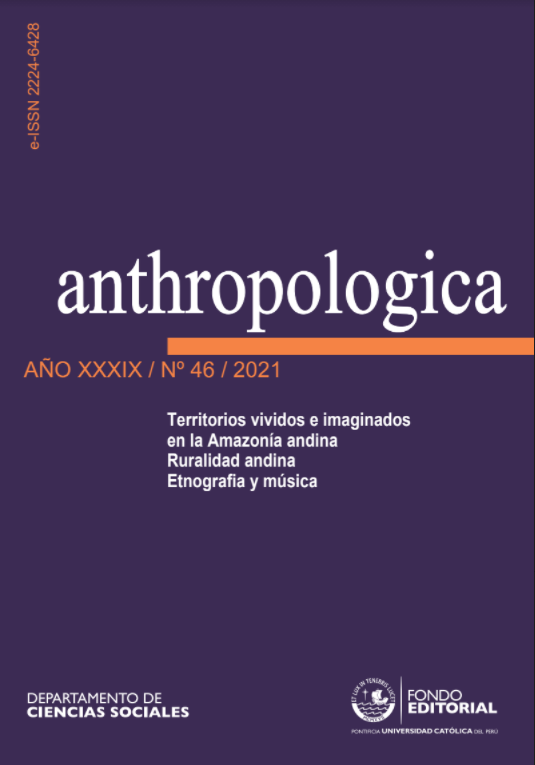Historia y disponibilidad de sal en el Bajo Huallaga. Formas de apropiación de una mina de sal en una comunidad kichwa
DOI:
https://doi.org/10.18800/anthropologica.202101.003Palabras clave:
Bajo Huallaga, kichwa, sal, historia, Amazonia, intercambioResumen
Se exploran los vínculos entre los kichwa de la comunidad nativa Callanayaku, en el Bajo Huallaga, y la mina de sal del mismo nombre, a partir de lo que dicen sobre su aprovechamiento en el pasado. En los relatos sobre la historia de esta mina se resaltan varias interacciones entre los kichwa de Callanayaku con personas foráneas (empleados de una empresa de recaudación de impuestos, indígenas de otros pueblos, comerciantes, personal de salud) a través de la circulación de la sal, en especial del intercambio comercial. La disponibilidad de la sal para todos estos grupos es explicada por las personas en la comunidad a través del control sobre las relaciones sociales en las redes de comercio y la distribución de la sal.
Descargas
Descargas
Publicado
Cómo citar
Número
Sección
Licencia

Esta obra está bajo una licencia internacional Creative Commons Atribución-NoComercial 4.0.








